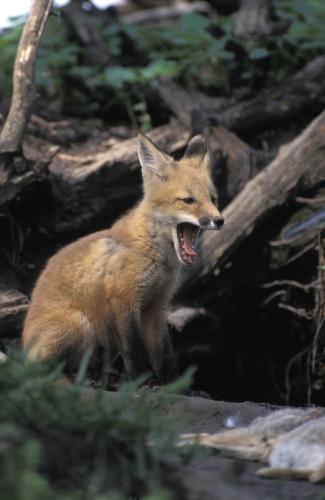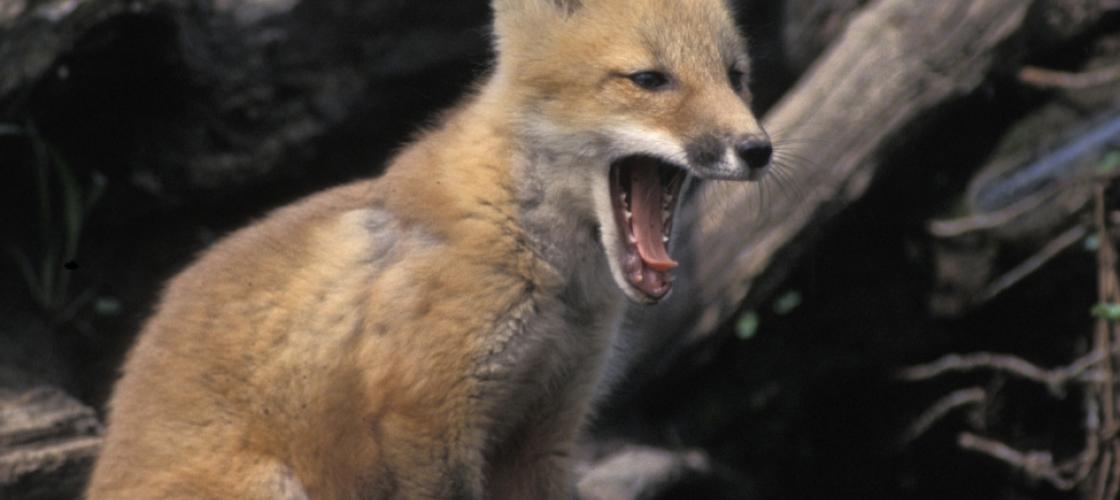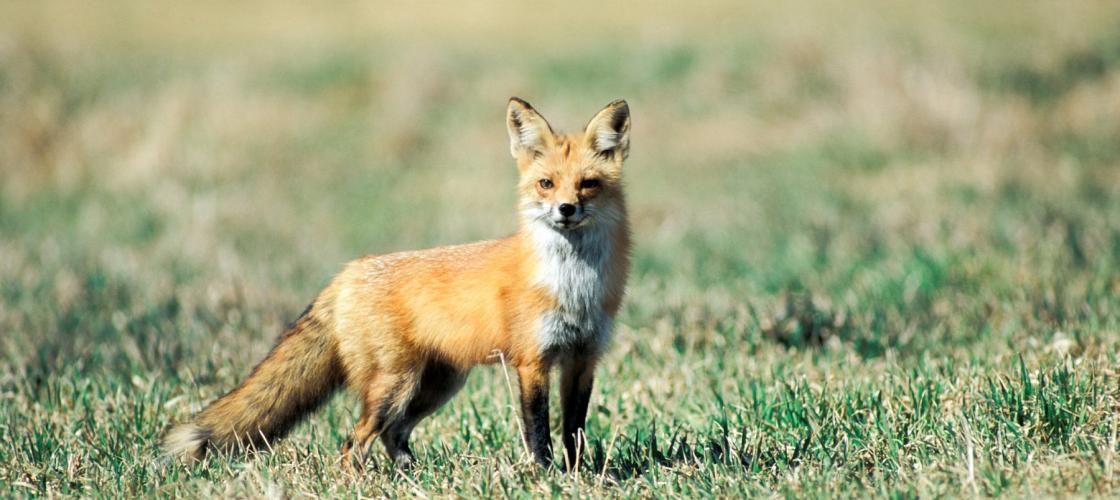Watching red foxes in action like in the video below, one can see how the saying "smart as a fox" came to be. With sharp senses, adaptability, and some help from the earth's magnetic field, red foxes (Vulpes, vulpes) are the largest number of their species in the world and found throughout Missouri.
Red foxes are highly adaptable mammals, at home from the country to the city. They prefer the edges of forests and fields and can be seen on golf courses and city parks. Red foxes are in the canid, or dog, family. They also share some behaviors with cats like stalking and pouncing on prey, running sideways, and walking on toes. Red foxes can also run nearly 30 miles per hour and leap fences.
Although they come in many shades, their telltale sign is their white-tipped tail. Nearly all red foxes have this marking. Their bushy tail is used for balance, warmth, and signaling others.
Red foxes make sounds that span five octaves. Adults have a dozen calls and their young about eight. They’ll also communicate with facial expressions and strong scent markings.
Their hunting skills are aided by stealthy senses of smell, hearing and night vision. Red foxes can hear the low frequency sounds of small animals digging under the ground, leaves, or snow. They use the earth's magnetic field to help zero on their prey before pouncing.
Red foxes only use dens when raising kits. They use abandoned burrows of other animals to raise their kits each spring. These often have a second entrance/exit so they are not trapped. They may also have a spare burrow to use in an emergency.
Red foxes hunt at night. They can occasionally be a nuisance to farmers, but they are also a great benefit in reducing the rodent population. Their fur is highly valued.
Tracking Red Foxes
- Learn to track a red fox
- Front tracks are 2-2 1/4 inches long; 4 toes; feet are oval or square in overall shape.
- Hind tracks are 2 inches long; 4 toes; feet are diamond-shaped.
- Foot hair may show in pad marks, making the track not appear sharp.
- Stride is 8–15 inches between prints.
- The claws leave marks, with the middle two claws most likely to show. The side claws often don’t show.
- Pattern is often nearly straight.
Learn more about the red fox with MDC’s Field Guide.










Recent Posts
























